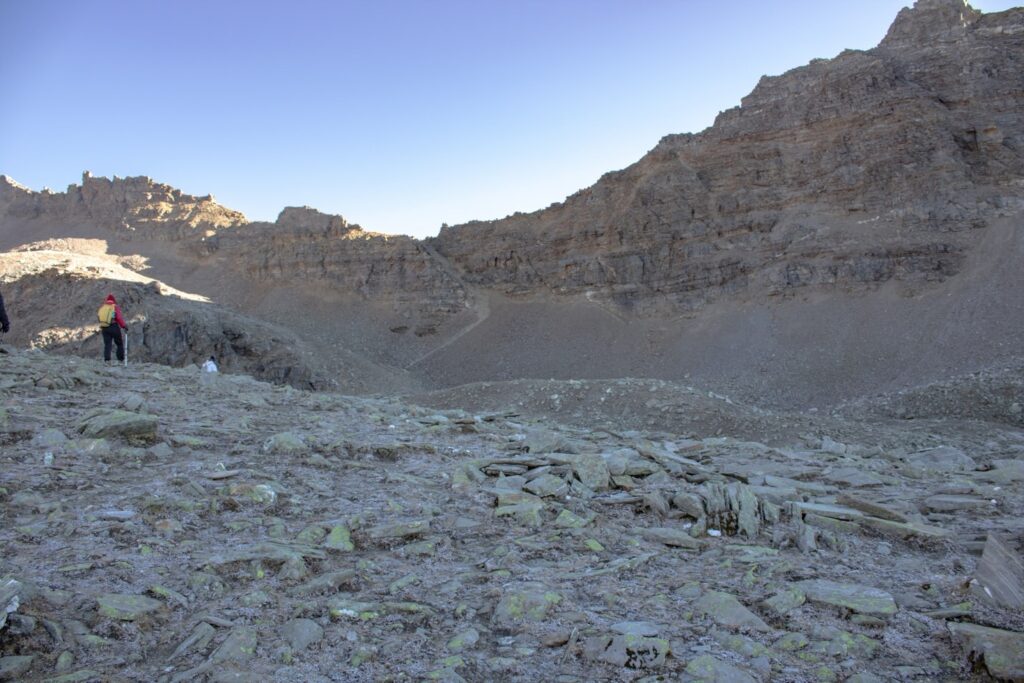What You’ll Learn from a Guide on the Rupin Pass Trek Beyond the Trail

Environmental Impact and Sustainable Trekking
Understanding Leave No Trace Principles
Embarking on the Rupin Pass trek, I was immediately struck by the untouched beauty of the Himalayas. The pristine trails, the clear mountain streams, and the serene landscapes were a testament to nature’s grandeur. However, I quickly realized that preserving this beauty required conscious effort. The “Leave No Trace” principles became my guiding mantra throughout the journey.
These principles emphasize the importance of minimizing our impact on the environment. For instance, I ensured that all my waste, including biodegradable items, was packed out. I refrained from picking plants or disturbing wildlife, understanding that even small actions could have significant consequences on the fragile ecosystem. Camping on durable surfaces and avoiding the creation of new trails helped in preventing soil erosion and protecting vegetation.
Moreover, I became acutely aware of the importance of respecting other trekkers and the local communities. Keeping noise levels down, yielding the trail to others, and being considerate in shared spaces fostered a sense of camaraderie and mutual respect. By adhering to these principles, I felt a deeper connection to the environment and a sense of responsibility towards its preservation.
How to Reduce Your Carbon Footprint on the Rupin Pass Trek
As I prepared for the trek, I was determined to minimize my carbon footprint. I opted for public transportation to reach the base camp, reducing emissions compared to private vehicles. My gear choices were also eco-conscious; I selected reusable water bottles, solar-powered chargers, and biodegradable toiletries to lessen my environmental impact.
On the trail, I was mindful of energy consumption. I avoided using generators and instead relied on solar-powered devices. Cooking was done using fuel-efficient stoves, and I ensured that campfires were avoided to protect the forest cover. Additionally, I supported local businesses by purchasing locally sourced food and hiring local guides, which not only reduced transportation emissions but also contributed to the local economy.
These conscious choices not only reduced my environmental impact but also enriched my trekking experience. Engaging with local communities provided cultural insights, and using sustainable practices deepened my appreciation for the natural world. The trek became more than just a physical journey; it was a lesson in responsible and mindful living.
Supporting Local Economies and Eco-Friendly Practices
One of the most rewarding aspects of the Rupin Pass trek was the opportunity to engage with local communities. Staying in homestays allowed me to experience the warmth and hospitality of the locals. Sharing meals and stories with them provided a deeper understanding of their culture and traditions.
Hiring local guides and porters not only ensured a safer trekking experience but also supported the local economy. These individuals possessed invaluable knowledge about the terrain, weather patterns, and cultural nuances, enriching the journey with their insights. Purchasing handmade crafts and local produce further contributed to the livelihoods of these communities.
Moreover, I observed that communities benefiting from eco-tourism were more inclined to engage in conservation efforts. The economic incentives encouraged them to preserve their natural surroundings, ensuring that future generations could also experience the beauty of the Himalayas. This symbiotic relationship between tourism and conservation highlighted the importance of sustainable practices in trekking.
Essential Trekking Tips from Experienced Guides
Packing Smart: What Seasoned Trekkers Never Forget
Before I set off on the Rupin Pass trek, I obsessed over packing. I read blogs, watched videos, and spoke to seasoned trekkers—everyone had an opinion, but one thing was consistent: pack smart, not heavy. And wow, were they right. The weight you carry becomes your reality for days, so everything in that backpack needs to earn its spot.
I learned quickly that organization is key. Ziplock bags kept my clothes dry and electronics safe. I carried a compact multi-tool that came in handy more than once—fixing a strap, slicing apples, even making adjustments to my boots. A tiny notebook helped me capture thoughts and trail sketches during quiet moments. Experienced trekkers I met also swore by carrying a sleeping bag liner, especially when using rented sleeping bags—it added a layer of warmth and hygiene I was grateful for during the freezing nights. If you’re planning your rupin pass trekking adventure and looking for a reliable and experienced trekking company, I highly recommend The Searching Souls. Their team of local guides, excellent safety protocols, and commitment to eco-friendly practices truly set them apart. From personalized support during the planning phase to expert guidance on the trail, they made my experience seamless and unforgettable.
Beyond the basics, I had a few game-changers. Reusable cloth bags for snacks, a couple of sachets of instant coffee for those chilly mornings, and an extra pair of dry socks that felt like luxury after a rain-soaked day. Packing light didn’t mean sacrificing comfort; it meant being intentional. Everything had a place, and everything had a purpose. And when the load on your back is perfectly balanced, the trail feels a little less steep.
Safety Guidelines You Shouldn’t Ignore
On my third day into the trek, we encountered a sudden snowstorm. Visibility dropped, temperatures plunged, and our trail was swallowed by white. It was in that moment I fully understood the importance of safety on a Himalayan trek. What saved us wasn’t just our physical fitness or gear—it was preparation, teamwork, and listening to our guide.
One golden rule I never broke: never trek alone. Even a few minutes ahead of the group felt risky. On steep ascents and slippery descents, we relied on each other. I also learned to never ignore signs of fatigue, dehydration, or altitude sickness—mine or anyone else’s. Our guide did regular health check-ins and oxygen readings, and it made a world of difference in catching issues early. One of our teammates felt dizzy and short of breath, and by recognizing it early, we avoided a medical emergency.
Time management became another form of safety. We always started early, aiming to reach our campsite before late afternoon. The weather tends to turn unpredictable post-lunch, and being stuck on an exposed ridge during a hailstorm isn’t just unpleasant—it’s dangerous. Safety on the trail isn’t about paranoia; it’s about awareness. And when you’ve been through even one moment of uncertainty, you start treating every safety briefing like gold.
Photography Tips: Capturing More Than Just Landscapes
One of the reasons I was excited about Rupin Pass was the photography potential. But let me tell you—no photo ever does the actual view justice. That said, I still wanted to bring back more than just memories, and over time, I learned how to really capture the soul of the trek.
I stuck to shooting during the golden hours—early mornings and pre-sunset evenings—when the light bathed the mountains in a soft glow that made every frame magical. Instead of carrying a bulky DSLR, I used a mirrorless camera with a versatile lens, and occasionally my phone for quick captures. I packed spare batteries in my sleeping bag at night to prevent them from dying in the cold. That small hack saved my shots more than once.
But the best photos I took weren’t just of landscapes. They were candid portraits of fellow trekkers laughing around a campfire, a shepherd leading his flock along a narrow trail, or a local woman offering warm tea in a stone house. These images told the story of the trek far better than any snow peak ever could. I also made it a point to ask for permission before taking photos of people—respect goes a long way in making your photography feel authentic rather than invasive.
The Emotional and Spiritual Transformation
How Nature Changes You: Stories from the Trail
Before I embarked on the Rupin Pass trek, I thought I was just signing up for a challenging adventure and some stunning views. What I didn’t anticipate was how deeply it would shift something inside me. Day after day on the trail, the physical exhaustion stripped away distractions and left me face-to-face with myself. Without the noise of daily life, my thoughts became clearer. There was a stillness in nature that mirrored itself in me, and it became easier to hear what truly mattered.
There were moments that felt straight out of a dream—like watching the sunrise from a silent ridge, or standing under the vast Milky Way with nothing but my breath and the chill mountain air to keep me company. I realized how small I was in the grand scale of things, and instead of feeling insignificant, I felt free. The pressure, the expectations, the never-ending rush—all of it faded with every step I took deeper into the mountains.
But not all the lessons were serene. The struggle of pushing through snow, the discomfort of sleeping in tents during rainstorms, the mental grit required to keep moving—it taught me resilience. It taught me that growth often comes wrapped in blisters, aching shoulders, and breathless climbs. Nature doesn’t coddle, but it does heal. And by the end of the trek, I felt lighter—not just physically, but emotionally and spiritually.
Why Trekkers Return Transformed
I remember descending from the pass and looking back one last time at the snow-covered trail we’d conquered. It was surreal. The mountains had challenged me, embraced me, and taught me things I didn’t even know I needed to learn. That’s the power of a trek like Rupin Pass—it changes the way you look at the world and at yourself.
Back home, I noticed the change in how I lived. I had a new sense of calm and gratitude. The little things I used to complain about seemed so trivial. I found myself more patient, more open, and more connected—not just to nature but to people around me. Even my daily routine shifted. I spent more time outdoors, journaled regularly, and sought simplicity in everything I did. The mountains had left their mark.
Many trekkers return to the Himalayas year after year, and now I understand why. It’s not just the thrill or the views—it’s the transformation. The trail peels away the surface and shows you who you really are. It gives you silence where you’ve only known noise, and purpose where there was once just motion. If you’ve ever felt lost or stuck, a trek like Rupin Pass doesn’t just help you find your way—it helps you find yourself.
Conclusion
Walking the Rupin Pass trail wasn’t just a journey through the Himalayas—it was a journey through layers of myself. From understanding the weight of a well-packed bag to feeling the weightlessness of letting go of daily stress, every step was a lesson. The trek tested my strength, stretched my patience, and sharpened my perspective.
What I took back wasn’t just memories or photographs—it was a renewed sense of purpose and a deeper appreciation for both nature and human connection. The cold didn’t just toughen my body, it warmed my gratitude. The heights didn’t just dazzle my eyes, they elevated my mind. If you’re thinking about taking the Rupin Pass trek, don’t just go for the views. Go for the shift. Because somewhere between the base and the pass, you’ll discover a version of yourself you didn’t know existed.
FAQs
1. Is the Rupin Pass trek emotionally rewarding?
Absolutely. It’s not just a physical challenge—it’s a mental and emotional reset that leaves you feeling grounded, inspired, and renewed.
2. How should I mentally prepare for this trek?
Start with small solo hikes, practice mindfulness, and set clear intentions. Understanding your “why” will help carry you through tough moments.
3. What’s the one thing you wish you knew before the trek?
That the weather and trail conditions change fast. Flexibility and a positive mindset are more valuable than perfect planning.
4. How does the trek impact your daily life afterward?
It shifts your perspective—makes you more patient, present, and appreciative of life’s simple pleasures.
5. Is there spiritual significance tied to the trek?
For many, yes. The solitude and scale of the mountains naturally inspire deep introspection and a sense of spiritual awakening.






